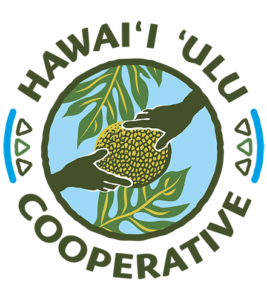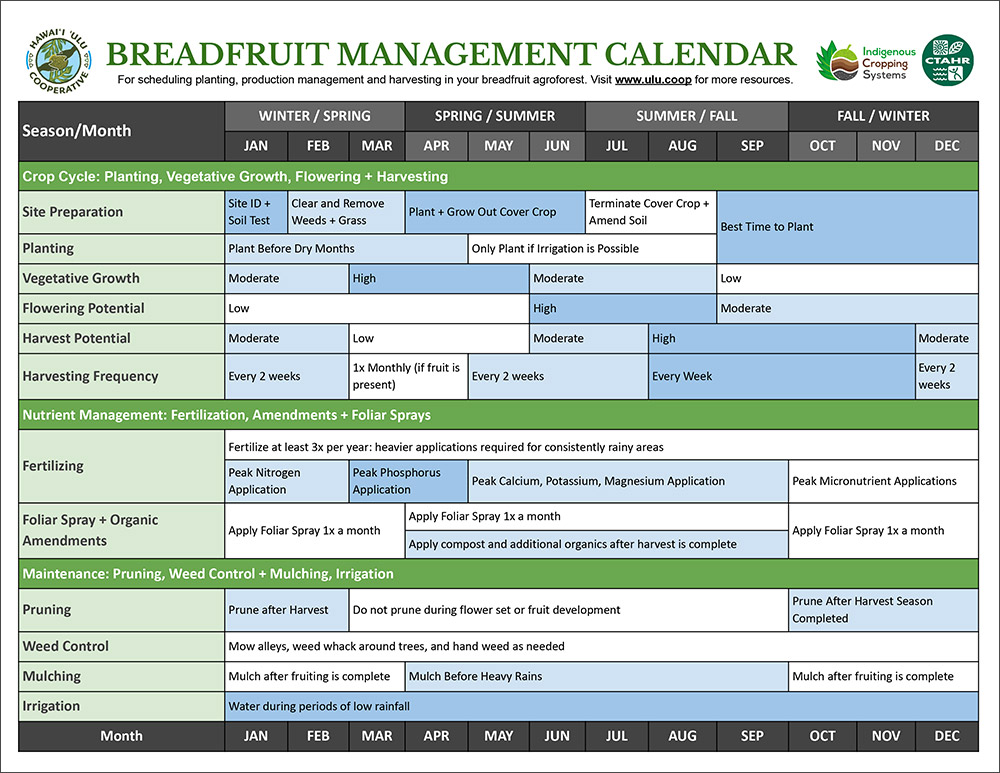Hawaiʻi Breadfruit Management Calendar
Growing ‘ulu trees requires year-round maintenance. This calendar breaks down each task month-by-month for Hawai‘i farmers. Download the free PDF by clicking the image below to help you stay on schedule, and read through the detailed information for links to in-depth resources on each activity covered – from planting and maintenance to harvesting!
This resource was created in collaboration with the Indigenous Cropping Systems Laboratory at the College of Tropical Agriculture and Human Resources.
Site Selection and Planting
When developing your site-specific farm plan for planting breadfruit, review the following Site Selection considerations for a new farm – located in our ʻUlu Production Primer. Prior to planting your orchard, completing a soil test is helpful to plan an appropriate nutrient management strategy. See our Soil and Tissue Testing page for more information. If you are wondering if breadfruit will grow in your area – see this Cultivation Potential of Breadfruit in Hawaiʻi blog and find your farm’s location on the attached suitability map.
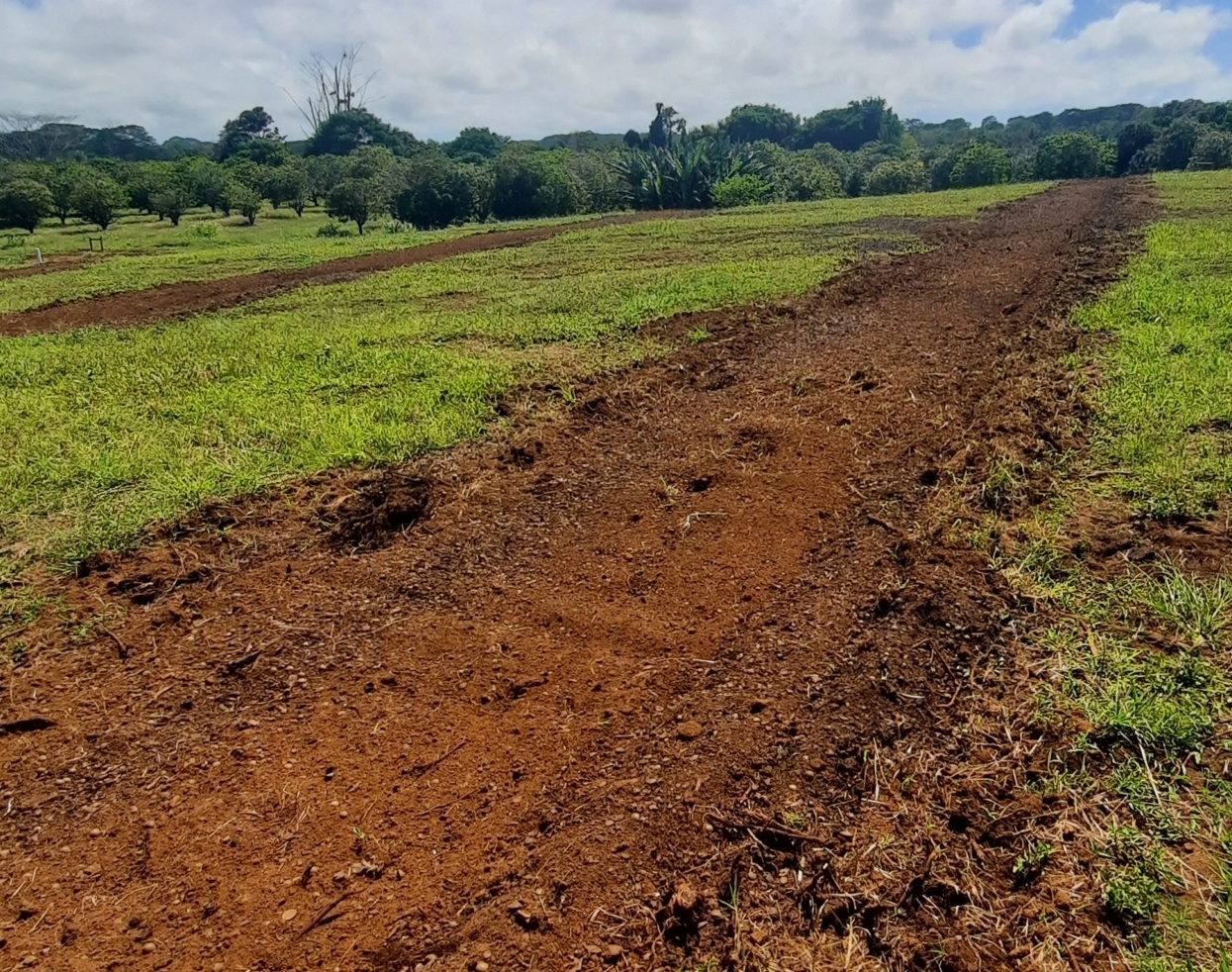
Fields prepared for planting after removing previous crops and debris.
Planting is best done after your local dry season and before heavy rains – generally in fall months. Avoid planting during the dry season – as young transplants require adequate access to water during establishment. Make sure to plan time to clear and prepare your field area prior to this time – proper planning ensures success!
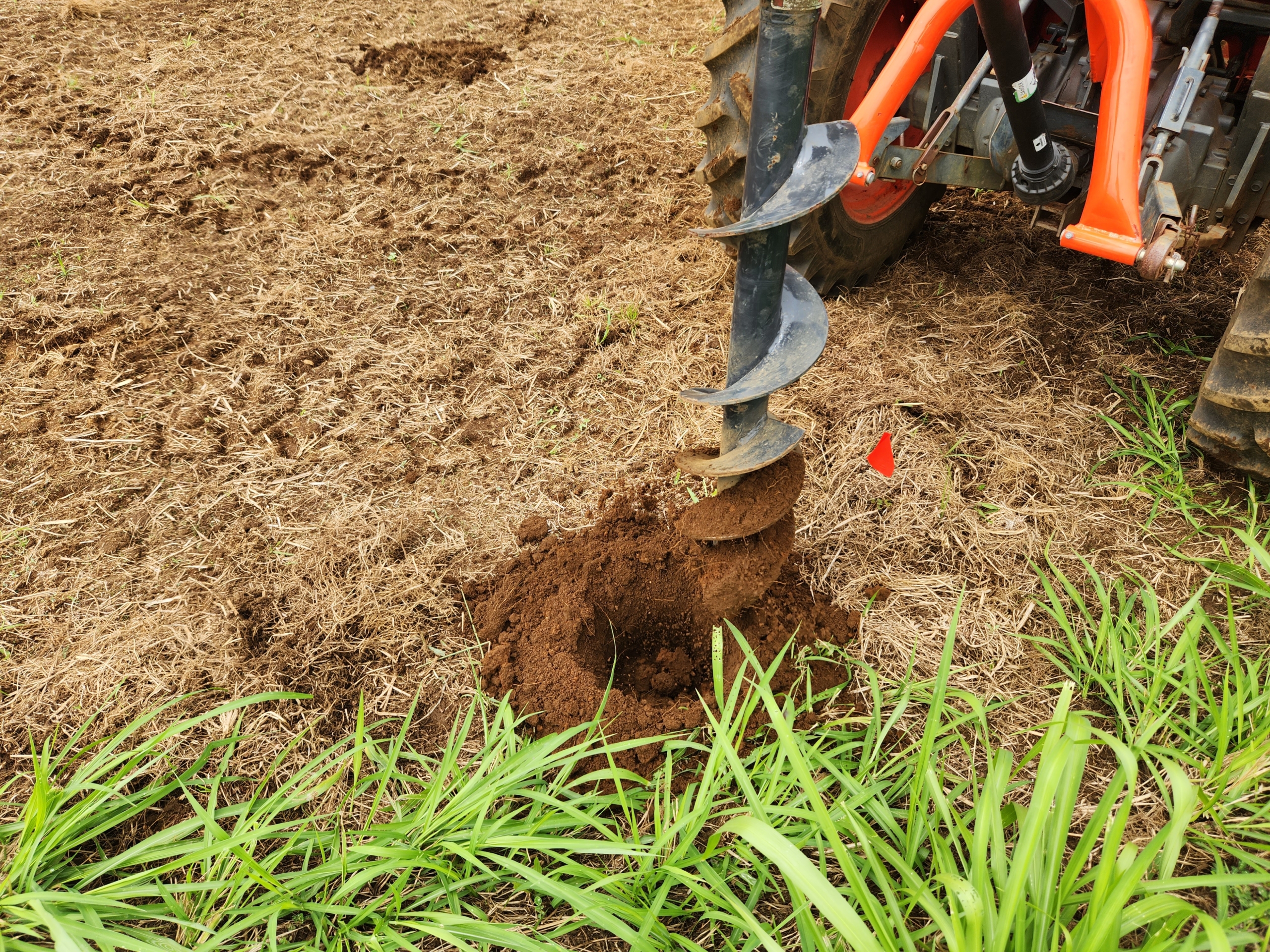
Holes being dug for adding amendments and young trees
Curious about which varieties of breadfruit are available to plant in Hawaii? Check out our Varieties Page, showcasing the various types of breadfruit that are grown in the islands, and our Varieties Video to see 7 different varieties – from tree to harvested + cooked fruit!
In addition to our ʻUlu Production Primer watch our Planting Video #1 and Planting Video #2 which show some examples of how to properly get your new breadfruit into the ground.
Growth Stages and Maintenance Considerations
Over the course of the year, there are optimal times to complete maintenance activities such as pruning, fertilizing, and harvesting. Vegetative growth will dominate the annual cycle of the tree until around 4-6 years of age when it will begin to incorporate flowering and fruiting cycles.
The highest amount of vegetative growth occurs between spring leading into summer (February – May), while flowering potential is the highest June-August – leading to highest harvest rates from summer into fall (August-November).
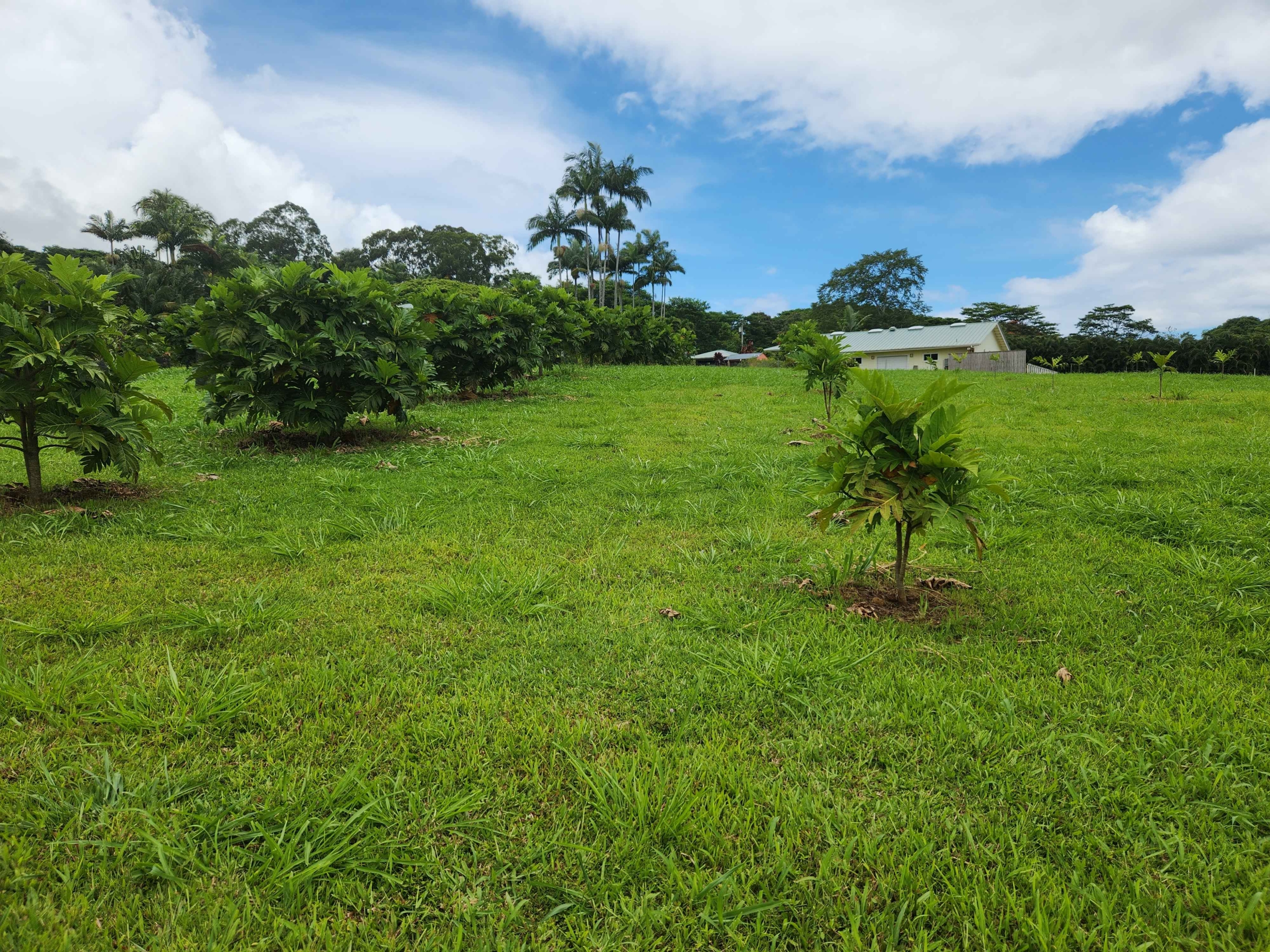
Younger breadfruit trees (right) next to their older siblings (left) show the progression of the vegetative growth cycle from a young tree to a maturing tree.
Peak application windows for various nutrients are listed above, but maintaining a consistent fertilizing application 2-4 times a year is sufficient if using a balanced fertilizer. Areas with higher rainfall should apply fertilizer more frequently than farmers in dry areas.
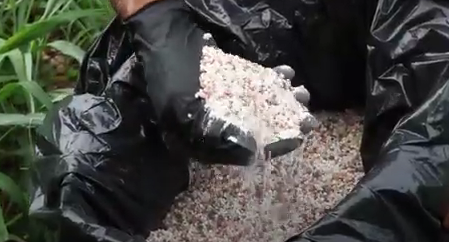
Properly mix your fertilizer + amendments or choose a pre-mixed blend that is optimal for breadfruit production
Check out our Nutrient Management Guide and Nutrient Management Video for more information on creating a successful plan to provide your trees with the proper nutrients. The HUC Fertilizer Calculator can also help you plan fertilizer amounts based on your number of trees. If you are interested in transitioning to or supplementing with natural practices, look at our Intro to KNF Blog for an introduction to some Korean Natural Farming practices and related resources.
Pruning should be done in the off-season of fruiting and flowering – during the vegetative growth period of the tree. Generally this is in the beginning of the calendar year or the following months – once the tree has finished producing fruit. See our Pruning Guide and Pruning Video for more information on pruning techniques for trees of various varieties and ages.
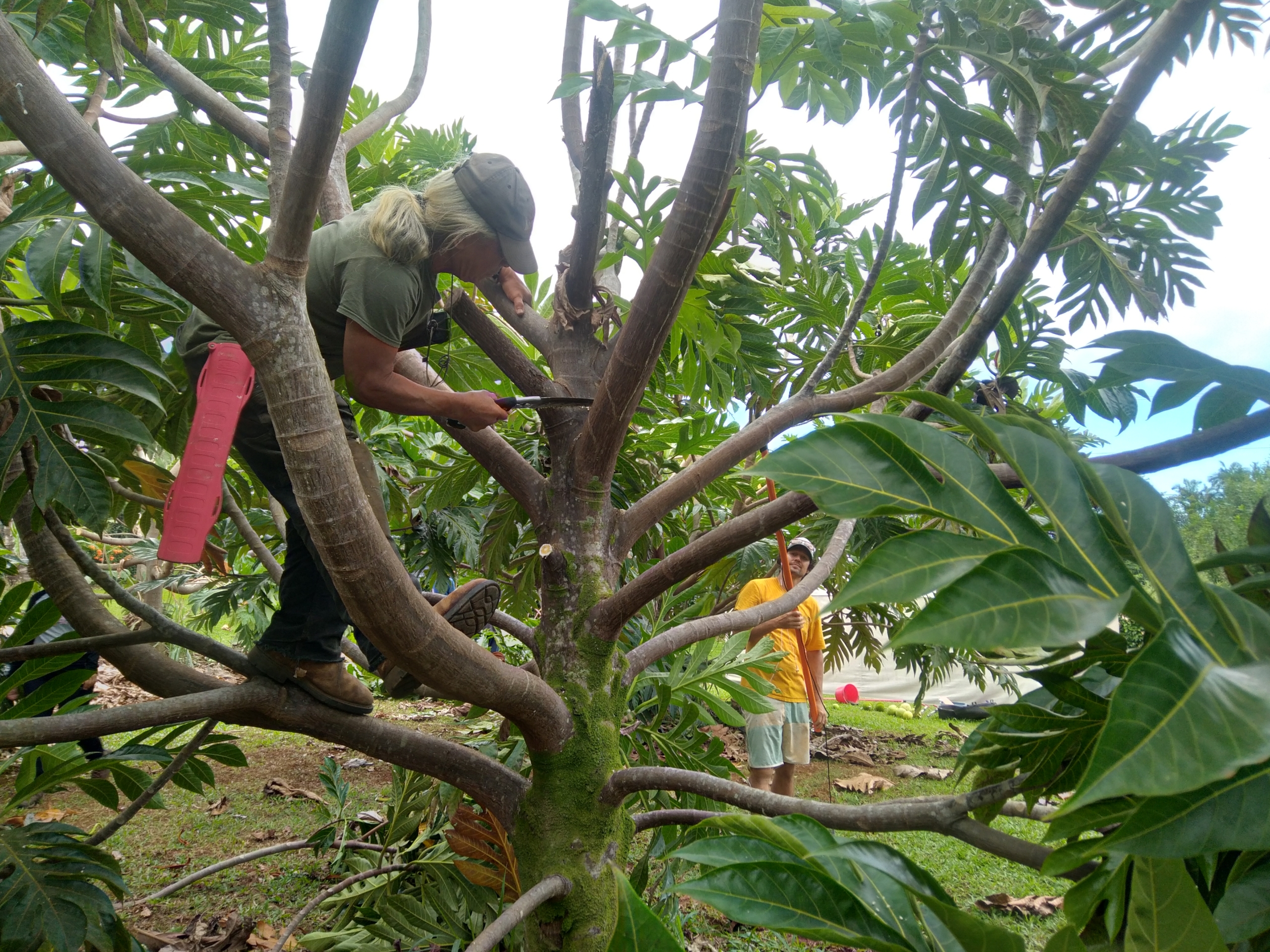
Co-op members participate in our 2022 Pruning Workshop at member farm Mala Kalu ‘Ulu on the Kona side – demonstrating best techniques for pruning trees of various ages and growth stages.
Harvesting periods are usually during the summer months leading into the fall. Knowing when to harvest breadfruit and how best to handle it once it is off the tree can lead to a more successful harvest when delivering crops to co-op facilities or other customers. Read our Harvest Guideline and watch our Harvesting Video to learn when and how to best harvest your breadfruit.
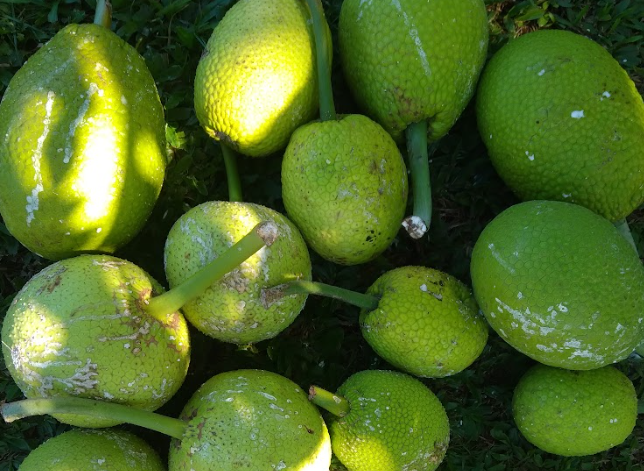
See the above resources to learn the proper indicators for harvesting your breadfruit – and a healthy bounty like this will be in your future!
Addressing Issues in Your Orchard
Having issues with disease or suspected nutrient deficiencies among the trees on your farm?
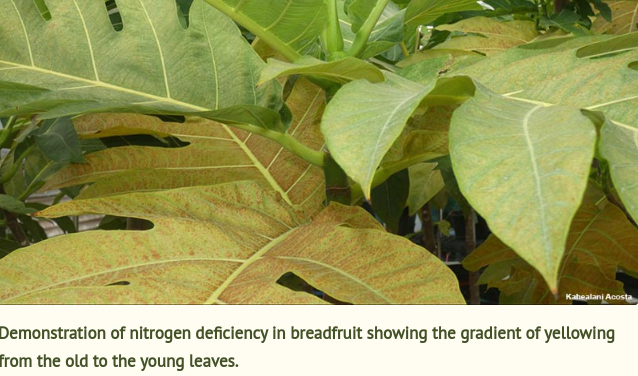
Review UH CTAHR’s ʻUlu Deficiency Guide to compare visual examples of various nutrient deficiencies found in breadfruit and learn how to address them.
Our Diseases Video featuring Dr. Noa Lincoln covers this information, as well.
